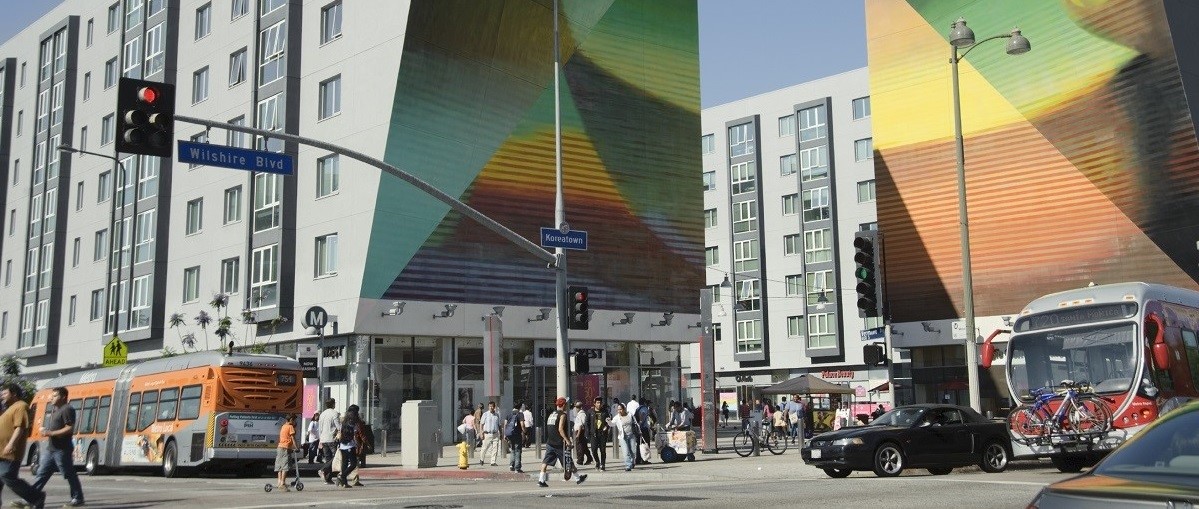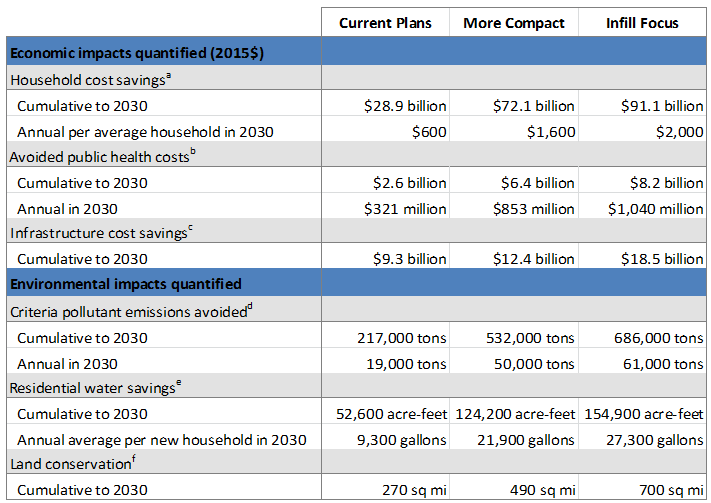
This week, Energy Innovation released its latest report, Moving California Forward, which assesses the impact of smart growth on meeting California’s climate goals. The study, co-authored with Calthorpe Analytics, finds that smart land use policy, combined with advances in energy technologies, can help California meet its goal of reducing greenhouse gas emissions 40% below 1990 levels by 2030.
Co-benefits of smart growth
California’s population is expected to grow by 6 million in the next 15 years—adding more than 1,000 people every day from now until 2030. Smart growth means accommodating this additional population by focusing growth in existing developed areas, a concept known as “infill” development.
Smart land use development (smart growth) encourages non-motorized transportation options such as walking or biking, and provides easy and accessible public transit options to reach further distances. As a result, improving walkability and public transit makes car trips shorter (by locating amenities closer together) and less frequent (by providing alternative transportation options).
Considering a quarter of California’s emissions come from passenger vehicles, smart growth that reduces car travel can help the state make significant emissions cuts, getting it where it needs to be to meet its 2030 climate target.
More so than meeting state emissions targets, smart growth has enormous economic and social benefits for governments and households alike. Our study shows that families could save an additional $600-2,000 annually by 2030, mainly through reduced car-related expenditures (transportation costs are currently the second largest household expense). Likewise, smart growth could save governments a total of $12-18.5 billion by 2030 due to avoided infrastructure costs (for roads, sewers, and water) and maintenance costs, as well as avoided public health costs by reducing air pollution from cars.
Figure 1. Co-benefit impacts of smart growth in 2030, annual and cumulative

California’s golden growth opportunity
Fortunately, California is already reaping the benefits of smart growth development: Los Angeles is working to build a comprehensive transit system, the Fresno area will break ground on mixed-use development in the near future, and the Bay Area recently became the best-in-the-nation for reducing the number of people who solo commute by car.
California has always been an environmental policy leader for America, and indeed the rest of the world. It has a golden opportunity to demonstrate the copious benefits associated with smart growth for other states and nations as a co-creator of this new age of enlightened urbanism.
++++
Read our blog post on Sustainable Cities Collective for a more details about the study and its results.
